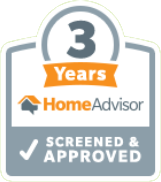
Mold Removal Service
Questions to Ask a Mold Remediation Company
Mold can grow just about anywhere, but it prefers warm, humid, or moist environments. It can also be found in drier environments with poor ventilation or air flow.
Mold appears as thread-like clusters of small, black, brown, green, or white dots. You might see them on the walls of your bathroom or basement. A musty odor is often associated with mold growth. If you’ve seen it or smelled it in your home, you might have a mold problem.
In some cases, mold will grow within the walls of a house or building, making it more difficult to detect.
Signs of mold can be found in areas with previous water damage, plumbing leaks, standing water, or where there is a lot of humidity. Visible mold growth can sometimes be found behind walls or where water has damaged surfaces.
People often detect the presence of mold because it changes the way they feel. Symptoms of mold allergy include runny nose, itchy nose, sneezing, fatigue, headache, congestion, sniffling, sore throat, and itchy or watery eyes. In children, a mold allergy can lead to recurrent respiratory infections.
Severe mold problems are often easy to identify. Some mold, however, is hidden and cannot be easily detected by our senses. You may find some online mold test kits. Many of these aren’t worth the expense. Basic kits test for mold spores. This isn’t an accurate indicator of a mold problem, unless the mold count is extremely elevated.
The best test is a physical inspection, along with indoor air quality testing. However, it is generally best to use a licensed, reputable, insured mold removal specialist who will perform a full assessment of your property.
Mold growth can not only lead to structural damage to your home (like sagging floors), but it can also adversely affect your health. You can be exposed to mold by touching moldy materials, eating moldy foods, and breathing in microscopic mold spores from the air.
It is possible to inhale over a half million spores per minute without even knowing it. Mold allergy symptoms may include skin rash, runny nose, irritated eyes, cough, congestion, and aggravation of asthma.
Yes. A very serious byproduct of mold colonization and growth are mycotoxins. Mycotoxins are linked to “sick building syndrome.” Additionally, mycotoxins can cause a range of symptoms in even healthy adults and children.
This array of toxic byproducts has even been known to cause death in some of the most severe cases.
It depends. People vary in their sensitivity to mold, both as to amount and type needed to cause reactions. For some, a relatively small number of mold spores can cause health problems. For others, it may take much more.
The basic rule is, if you can see or smell it, take steps to eliminate the excess moistureand get it tested.
If you have mold present in your home, it can cause illness in several ways:
Irritation: Exposure to mold can irritate the eyes, nose, and upper breathing passages. Symptoms include burning eyes, nasal congestion, coughing, and post-nasal drip.
Allergy: Many people become allergic to mold and develop hay fever or asthma symptoms. This includes itchy, watery eyes, nasal congestion, sneezing, chest tightness, cough, and wheezing.
Toxins: Some molds create chemicals called mycotoxins that can cause illness. Much remains unknown about mold toxins. What we do know is that some molds effect the skin, the respiratory system, the immune system, and the nervous system.
Infection: Some molds can also cause infection, such as chronic sinus infections. Other types of mold-induced infection are much less common, and occur mainly among people with weakened immune systems. Examples of individuals with weakened immune systems include: those with HIV infection; those receiving chemotherapy; the elderly; children; and pregnant women.
Yes. Certain types of molds can produce toxins called mycotoxins. Mycotoxins are toxic chemical substances and can induce liver cancer and kidney failure, as well as affect the brain or nervous system.
Mycotoxins are not always produced. This depends on what the mold is growing on, temperature, pH, humidity, and other unknown factors. When mycotoxins are present, they occur in both living and dead mold spores and can be found in materials that have become contaminated with molds.
Most non-professional treatments simply cover up odors and possibly kill off surface molds or impurities temporarily. Unfortunately, they can’t penetrate deeper into walls and other areas where molds and mildew originate.
Furthermore, such sprays or aerosols often contain harsh chemicals or synthetic ingredients that could be harmful when ingested. The feeding ground of the mold spores must be identified in order to eliminate the source. Otherwise the problem will not be fully resolved.
The act of disturbing mold can increase the airborne spore level by ten-thousand times. This can result in severe illness and actually encourages mold growth if done improperly. Such high levels of airborne mold spores warrant protective clothing, including gloves, goggles, and a HEPA respirator.
If you suspect you have toxic mold in your home, consider hiring a professional mold remediation expert. They will be able to safely clean up the mold and dispose of it.
We will schedule an on-site assessment and evaluation with a mold inspector as soon as is practical and convenient for you.
Before we begin treating your mold problem, we conduct a thorough evaluation. This includes locating the source of moisture that started the problem in the first place. Then we’ll discuss treatment options.
Since every mold infestation is unique, it inherently makes each job different. This means, of course, that the cost of the mold cleanup and related services will vary from job to job.
According to the Environmental Protection Agency (EPA): “Surface sampling may be useful to determine if an area has been contaminated.Sampling for mold should be conducted by professionals who have specific experience in designing mold sampling protocols, sampling methods and interpreting results.”
The tape lift method is analyzed by direct microscopy. This means you don’t need to grow the fungus in a culture first. It allows you to detect both the viable (living) and non-viable (dead) spores. These are both important because mold spores can still be allergenic and toxic even after being treated with a disinfectant.
Additionally, some types of mold grow much faster than other types. Slower-growers (like the black mold Stachybotrys) may be overgrown by molds that grow more rapidly. This can make those slow-growers difficult to find using the culture technique. The tape-lift/swab surface method enables all spores in the sample to be observed.
The sample(s) are stained with a dye, then examined under a high-power microscope (400 or 500X magnification) and 1000-times magnification by an experienced, highly-trained laboratory technologist.Mold samples are then typed and counted.
We also use spore trap (non-culturable) air sampling in order to capture and quantify a broad spectrum of fungal spores present in the air. This allows us to determine if the levels present suggest a mold problem in your home.
If the contamination is under 10 square feet, the mold remediation can take as little as one day. If over 10 square feet, we use the following guidelines:
- Preparation (which includes containment) and installation of engineering controls can start immediately.
- Demolition and sanitizing can be completed in one to two days in many cases.
- After remediation work is completed, the air scrubber must run 24 to 48 hours.
So, in all, 1-2 days if the mold is under 10 square feet; 3-7 days if the mold is over 10 square feet.
We typically only ask that you remove any valuables, family heirlooms, firearms, etc. from the area before we begin. We also recommend that you remove anything that will be needed during the remediation (e.g. important files, toiletries, clothing, etc.) from the affected areas. Once containment begins, only individuals licensed by the state can enter.
Most likely. However this depends on where the mold was discovered and what areas will need to be contained for remediation. If we must block the kitchen, bathrooms, or turn off the HVAC system for a prolonged period, you may want to make other arrangements.
If the area being remediated can be contained, then pets are fine as long as they are kept away from the containment. On a larger project, especially with any source material removal, we would strongly recommend taking your pets elsewhere for the day.
Yes, the scrubber must remain on until turned off by a TCB EnviroCorp mold remediation professional.
We can perform post-treatment air testing with an independent, third-party laboratory to ensure that the air quality issues have been eliminated.
That depends. In most cases we are able to clean the mold from structurally sound surfaces. Your TCB EnviroCorp representative will discuss various options up front to make sure your expectations are met.
No. Painting or caulking over existing mold won’t kill it.
Before painting or caulking, remove the mold and dry the area completely. This should be done by a licensed mold removal specialist in order to prevent cross contamination.
In general, porous substances that are growing mold, such as paper, rags, wallboard, and rotten wood, should be bagged and discarded. Harder materials such as glass, plastic, or metal can be kept after they are cleaned and disinfected.
Yes. They can support mold growth inside (e.g., from a dirty or clogged air conditioning pan, due to over-humidification of system, etc.). Or the air duct can serve as a means of circulating and distributing spores throughout the air in your home.
Some air cleaners are designed to produce ozone. Ozone is a strong oxidizing agent used as a disinfectant for water and sometimes to eliminate odors. However, ozone is a known lung irritant.
Symptoms associated with exposure include cough and chest pain, as well as eye, nose and throat irritation. Ozone generators have been shown to increase indoor levels above the safe limit.
They are sometimes promoted to treat homes, furniture and clothing after fires to remove smoke odors. Ozone is a strong oxidizer that will accelerate the degradation of rubber, upholstery, paints and other materials. So even when used in unoccupied areas, ozone generators can cause damage to building materials and electronic devices.
Yes. It’s possible that contaminants can enter small openings in the ventilation system and be distributed to other parts of the home.
Yes. Moisture can get trapped inside new homes that are air-tight, especially if kitchen and bathroom ventilation is inadequate or absent. Also, if your carpet was laid directly on a concrete slab without a vapor barrier in between, it can absorb moisture and make it subject to mold growth.









